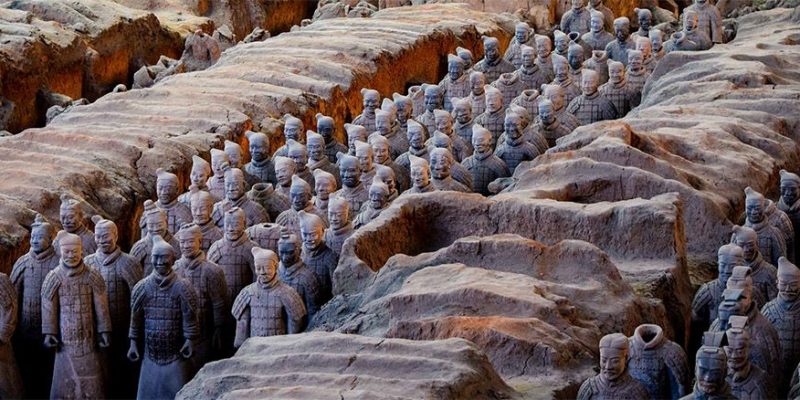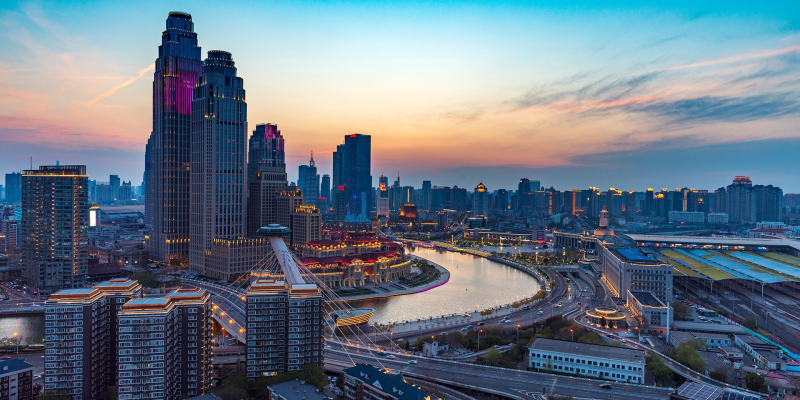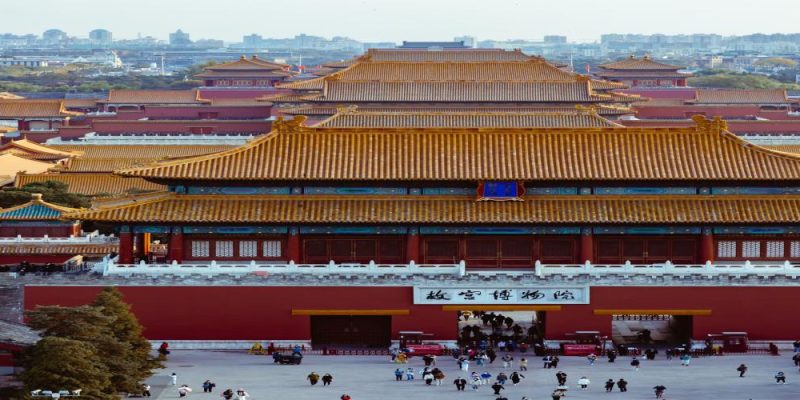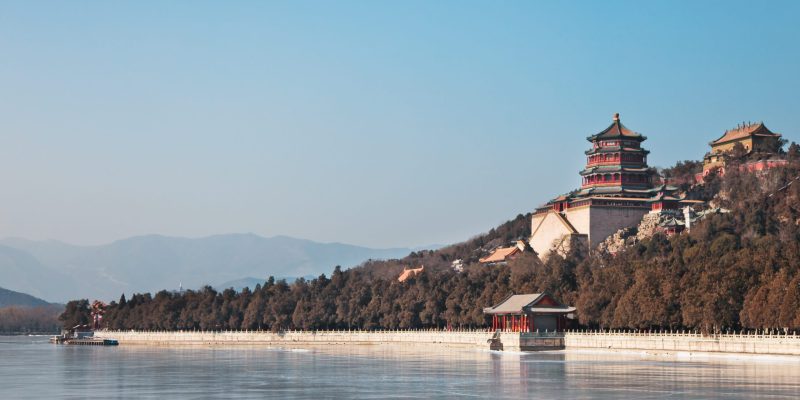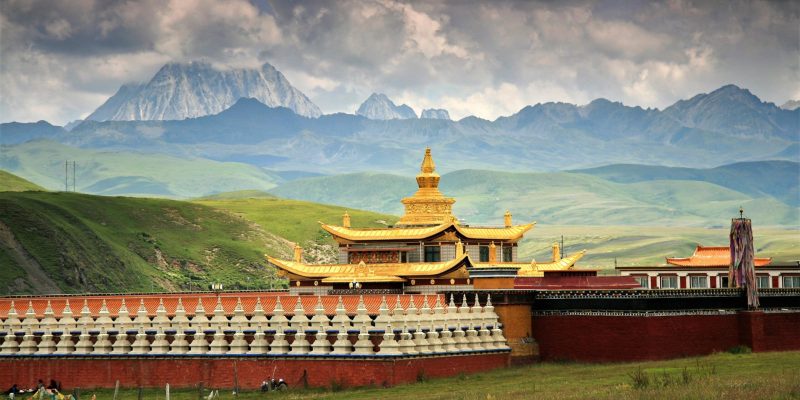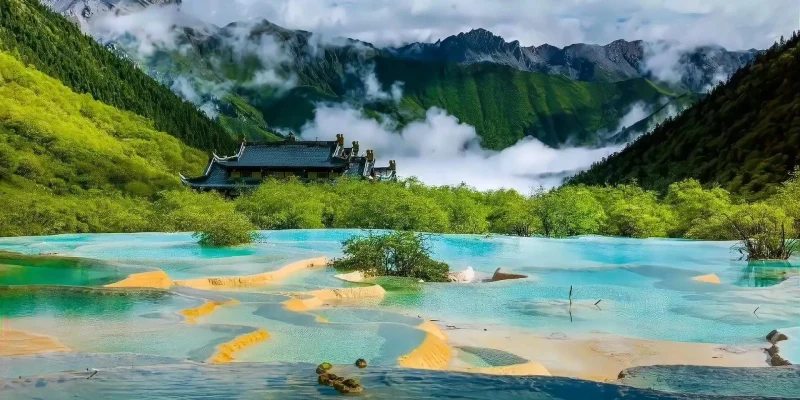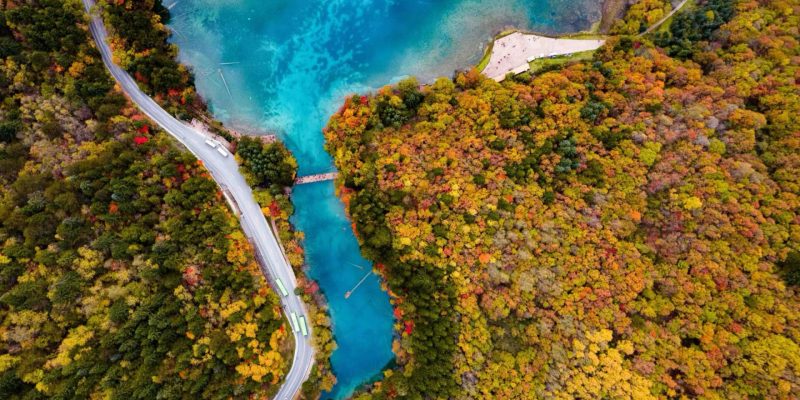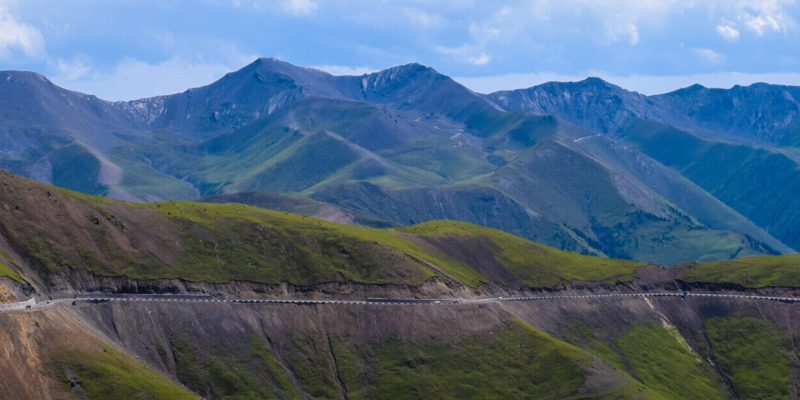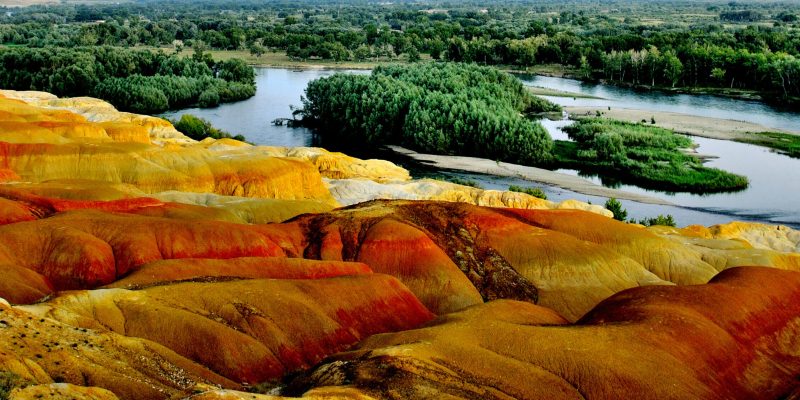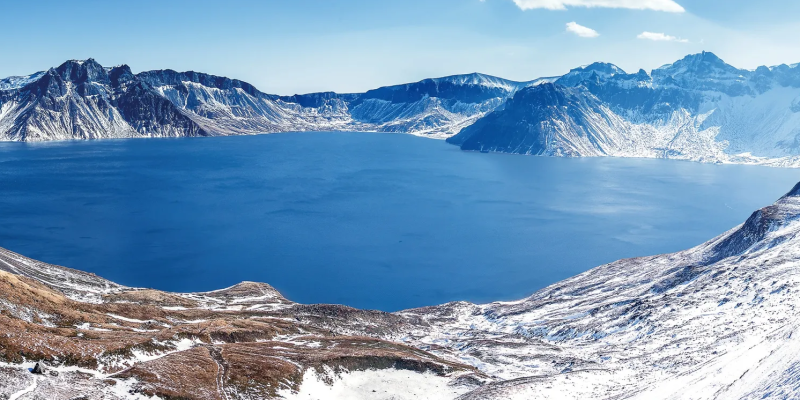The weather in China’s four seasons.
Most of China’s territory is situated in the northern temperate zone, giving rise to distinct seasonal variations. Summer is rather hot and winter is cold. In contrast, the weather in spring and autumn is milder and more comfortable. Now, let’s explore the characteristics of China’s four seasons and some festivals worth commemorating.

Spring View in Guilin
In Spring (March to May):
Spring is among the best times to visit China. From March to May, the weather warms up and becomes agreeable, with an average temperature ranging from 10 to 23 °C (50 to 73 °F). The southern part of China becomes humid due to rain, while the northern part remains relatively dry. In spring, many cities are filled with lush green landscapes and colorful blossoms. Additionally, the air is fresh after a rain shower.
Recommended Places:
Wuyuan, Xi’an, Hangzhou, Huangshan, Yunnan, Gansu, Yili Area (in Xinjiang Province), and Shandong.
Events and Festivals:
Luoyang Peony Festival: The culture festival is held from April to May when peony flowers burst into full bloom. You can admire various kinds of peonies and take part in numerous exhibitions in Luoyang.
Water Splash Festival: This is a Chinese ethnic minority festival observed by the Dai people in Xishuangbanna, Yunnan, in mid-April every year. The Dai people believe that splashing water on others can wash away bad luck. You can join in and have a great time.
In Summer (June to August):
During this season, the intense sunshine enlivens most cities in China. The continuous rainfall provides fresh greenery and countless waterfalls to mountain and highland attractions, making the scenery the most beautiful throughout the year. However, the average temperature in summer in China is 28 to 34 °C (64 to 82 °F).
Recommended Places:
Zhangjiajie, Hulunbuir, Qinghai,and Guizhou.
Events and Festivals:
Double Seventh Festival: Also known as the Qixi Festival, China’s Valentine’s Day. It falls on July 7th in the lunar calendar (usually in August). People celebrate it by giving their loved ones flowers, chocolates, and other gifts.
Dragon Boat Festival: It takes place on May 5th in the lunar calendar (usually in early June). At this time, people in China eat zongzi, a pyramid-shaped dumpling made of glutinous rice with meat and peanuts wrapped in bamboo leaves. You can learn to make zongzi and watch dragon boat races by the river.
Torch Festival: This is a regional festival celebrated by the Li ethnic group in Yunnan, Guizhou, and Sichuan. It occurs on June 24th in the lunar calendar (usually in late July). People will march along the mountains at night, holding a small torch. You can join them, sitting around the big torch, to watch various performances.
In Autumn (September to November):
Autumn, similar to spring, is regarded as the most pleasant time to visit China. The temperatures stay between 15 and 27 °C (59 and 81 °F). It is warmer than spring and cooler than summer. Autumn brings less rainfall, a gentler breeze, and more clear days to China, offering ideal conditions for people to enjoy outdoor activities.
Recommended Places:
Wuhan, Guilin, Suzhou, Jiuzhaigou Valley, Kanas (in Xinjiang),and Henan.
Events and Festivals:
Mid-Autumn Festival: One of the most renowned traditional Chinese festivals occurs on August 15th in the lunar calendar (usually in late September or early October). There is a full moon at night during the Mid-Autumn Festival. In the eyes of Chinese people, the full moon symbolizes reunion. Chinese people worship the full moon with their families at night and eat mooncakes.
In Winter (November to February):
Winter temperatures are generally low, basically ranging from -30 °C to 8 °C (-22 °F to 46 °F). Northern China usually has temperatures below zero and snow. In southern China, especially in Yunnan, the temperature is typically above zero and much warmer than in northern China. During winter, the views in the north and south of China are completely different. There is heavy snow in the north, while trees may still be green in the south.
Recommended Places:
Harbin, Sanya, Yunnan, and Taiwan.
Events and Festivals:
Spring Festival: The Spring Festival is another significant festival for Chinese people. Usually, it falls in late January or early February. People paste spring festival couplets on the gate and decorate their homes with red ornaments. Parents and elders will give children red envelopes to wish them good luck throughout the year. There will be celebrations in squares or parks. You can enjoy the traditional lion dance with the locals.
Lantern Festival: It falls on the 15th day of the Spring Festival. Eating “Tangyuan” is a tradition of the Lantern Festival. It is a delicacy made of glutinous rice flour with sweet fillings. At night, people will watch lantern parades in parks. You can try releasing floating lanterns on the river or lake.
Harbin Ice and Snow Festival: It is the largest event for people to enjoy snow views and ice sculptures. People usually celebrate this festival from December to early February. People in Harbin celebrate the Harbin Ice and Snow Festival and the Spring Festival together. For a better experience, you can visit Harbin Ice and Snow World to admire the best-designed ice sculptures. In this park, you can participate in some snow sports.
Recommended Tour Itinerary
8 Days
"Zhengzhou, Anyang, Kaifeng, Dengfeng, Luoyang"
The most Popular places to visit in China and the best time to go.
China’s expansive landscape presents a diverse range of breathtaking destinations, each boasting its own unique allure and optimal visiting periods. Whether you’re headed to natural wonders, historical landmarks, or vibrant cultural hubs, China has something for everyone. Here are the top 10 places to visit in China along with the best times to go:
Guilin (April to May, September to October):
Highlights: Li River, Longji Rice Terrace, Reed Flute Cave, Elephant Trunk Hill.
Guilin is renowned for its stunning karst scenery, featuring picturesque limestone peaks, verdant hills, and meandering rivers. Spring and autumn are the prime times to visit Guilin. The weather during these seasons is mild and comfortable, ideal for outdoor activities and sightseeing. You can relish the warm sunshine and gentle breeze.
In Yangshuo County, hiking along the Yulong River is a wonderful experience. You can take a bamboo raft from the wharves by the Li River to enjoy the endless mountain views on both sides. In downtown Guilin, there are also great places to visit such as Elephant Trunk Hill and Reed Flute Cave. These are well-preserved natural sites that will provide you with an unforgettable journey. In autumn, the golden-hued Longji Rice Terraces are a magnificent sight.
If you encounter rainy days, you can visit caves like the Flute Reed Cave and Crown Cave. They are natural formations due to karstification, and you’ll see amazing stalagmites and stalactites.
Recommended Tour Itinerary
Yunnan (All-Year Round):
Highlights: Lijiang, Dali, Xishuangbanna, Jade Dragon Snow Mountain, Erhai Lake, Shangri-la.
Yunnan likely has the best weather in China. Kunming, the capital city of Yunnan, is nicknamed the “Spring City” as it is warm like spring all year round. However, we recommend visiting Yunnan from April to September. The natural landscapes are at their best during these months, and there are fewer rainy days. You can take a ride around Erhai Lake and visit the ancient towns around it. You can also attend ethnic holiday events at Lijiang ancient town and Xishuangbanna, such as the Water Splash Festival of the Dai people and the Torch Festival of the Li people.
In early September, snow starts to fall on Jade Dragon Snow Mountain and Meili Snow Mountain in Shangri-la. You can enjoy the stunning view of endless snow-covered mountains. We suggest visiting the snowy mountains before November as the weather in December and January is cold and snowy, making it more challenging to visit. In winter, Yunnan is still worth visiting as the weather is much warmer than in other southern cities like Guilin, Shanghai, and Hong Kong.
Recommended Tour Itinerary
3 Days
"Kunming ,Yuanyang Hani Rice Terraces"
Xi’an (March to June & September to November):
Highlights: Terracotta Warriors, Ancient City Wall.
Xi’an is a city rich in Chinese civilization and culture. With a history of over 7,000 years and having been the capital city of 13 ancient dynasties, it was also the start of the Silk Road. Xi’an is friendly to people of all ages and first-time travelers.
Xi’an is an ideal place to experience antique charm. The best time to visit this ancient city is in spring and autumn, from March to May and from September to November, when the weather is warm and pleasant. In spring, many kinds of flowers bloom, including tulips, peonies, cherry blossoms, peach blossoms, pear blossoms, and winter jasmine. In autumn, some of the most famous attractions like the Ancient City Wall and the Qin Terracotta Army host outdoor activities.
Recommended Tour Itinerary
Beijing (All-Year Round):
Highlights: Forbidden City, the Great Wall, Tiananmen Square.
Like Xi’an, Beijing is another ancient city with a long history. If it’s your first trip to China, Beijing is a great choice. With a rich historical background, Beijing has many ancient remains such as the Forbidden City, the Great Wall, and the Temple of Heaven. You can visit these places to learn about Chinese history. The Forbidden City was the palace for royal families in the Qing dynasty and is now converted into a museum. The Great Wall was designed to defend against invaders from the north in ancient times and has watchtowers and beacon towers for warriors to stand on and guard.
If you prefer a mild climate, visit Beijing from April to October. At this time, the warm weather is very suitable for travel. In winter, especially in January and February, there are many Spring Festival events held in Beijing. You can attend temple fairs and traditional lantern shows. However, be prepared for large crowds at all attractions as Beijing is one of the most popular cities to visit in China.
Recommended Tour Itinerary
Tibet (June to September):
Highlights: Lhasa, Mt. Everest.
Generally, the best time to visit Tibet is from May to October. During this period, the weather is comfortable with an average temperature of 10°C (50°F). You can see the clear blue sky and stunning snowy mountains.
If you’re planning a family tour to Tibet, the best time is summer, which includes your child’s summer vacation. In summer, the oxygen level is the highest throughout the year, so the effects of altitude sickness are milder. Besides, the summer temperature won’t be too high due to the high altitude. You will see a clear blue sky with fewer clouds, making it an ideal time for outdoor activities such as hiking.
Recommended Tour Itinerary
Zhangjiajie (March to October):
Highlights: Zhangjiajie National Forest Park, Tianmen Mountain National Forest Park.
There are two beautiful natural parks in Zhangjiajie: Zhangjiajie National Forest Park and Tianmen Mountain National Forest Park. Spring and summer bring stunning greenery to the mountains and valleys of Zhangjiajie. Zhangjiajie is famous for its mysterious and magical mountainous scenery, which is the real-life version of “Hallelujah Mountain” in the movie Avatar. The mountains and forests in the National Forest Park will protect you from sunburn, allowing you to enjoy a pleasant hike around the attractions.
When autumn comes, the temperature is milder than in spring and summer, and there are more rainy days. It’s the best time to see Heaven’s Gate on Tianmen Mountain. At this time, the mountains are surrounded by mist, becoming more mysterious and sacred.
Recommended Tour Itinerary
Chengdu (March to May and September to November):
Highlights:Research Base of Giant Panda Breeding
Like Xi’an, Chengdu is also hot in summer. Thus, the best seasons to visit this cultural and vibrant city are spring and autumn. Chengdu has the largest panda base, which is a research center for the breeding of giant pandas. If you’re a big fan of pandas, the Chengdu Panda Research Center is the best place to watch precious pandas. Baby pandas are often born in late August. When they are 2 to 3 weeks old, you may have a chance to see them in the Sunshine Nursery House and Moonlight Nursery House at the base. You can even have a chance to be a volunteer there.
Recommended Tour Itinerary
3 Days
"Chengdu, Leshan Giant Buddha, Dujiangyan Irrigation System"
7 Days
"Chengdu, Mt Emei, Mt Qingchen, Dujiangyan"
Xinjiang (June to October):
Highlights: Turpan’s Flaming Mountains, Kanas Lake.
Xinjiang is the largest province in China and is famous for its unique culture of different minorities and stunning natural landscape. It’s a part of the Silk Road with many historical sites. The best time to visit Xinjiang is between June and early October.
The weather in the northern and southern parts of Xinjiang may vary. From June to August, the weather is perfect in the northern part of Xinjiang. At this time, Kanas is worth visiting. Kanas has various natural resorts, including lakes, valleys, rivers, and forests. The lush forests are lined with a clear blue lake, and there are cabins scattered along the hillsides. The graceful landscape of Kanas is an absolute paradise for photography lovers.
In the southern part, it is cooler around autumn, from late August to early October. You can visit the Flaming Mountain in Turpan. Legend says it’s the hottest area in China, just like its name suggests. You can taste the fruits in Turpan, which are much sweeter and more juicy. The grapes and raisins here are popular throughout the country.
Recommended Tour Itinerary
Inner Mongolia (July to September):
Highlights: Hulunbuir Grassland, Badain Jaran Desert.
Bordering Mongolia, Inner Mongolia has a similar climate and environment. The culture here is a blend of traditional Chinese and Mongolian influences. Even in summer, the temperature in Inner Mongolia is around 15–25 °C, making it one of the most popular summer resorts in China. The most charming summer scenery in this place is the endless Hulunbuir grasslands. Wildflowers and ragweed bloom in the grasslands and pastures, and cows, sheep, and horses can be seen everywhere. You can stay in a yurt or camp on the grassland.
If you prefer a more unique trip, visit the Badain Jaran Desert and take a camel ride. Sandy peaks and colorful lakes are also worth visiting.
Recommended Tour Itinerary
Harbin (December to February next year):
Highlights: Harbin Ice and Snow World, St. Sophia Church.
In winter, Harbin becomes a snow kingdom and is considered one of China’s most beautiful snow towns. Harbin has well-equipped snow sports resorts like Yabuli Ski Resort, making it an ideal place to experience winter activities such as skiing and ice skating.
Harbin’s International Ice and Snow Sculpture Festival in winter is an event you don’t want to miss. You can admire various ice sculptures and challenge the 500-meter ice slide in Harbin Ice and Snow World. Besides, you can watch figure skating in this theme park.
Recommended Tour Itinerary
When is the best time to visit China?
In general, a year in China can be categorized into three tourist periods: peak season, shoulder season, and off season. We highly recommend visiting China during the shoulder season. Nevertheless, regardless of when you wish to visit China, we can customize your trip to ensure you make the most of your vacation and have an unforgettable journey with the best views.
Peak Season (May to August ):
Despite the heat in summer, the views are at their finest during this time. The trees in natural resorts are greener than in spring, infusing more vitality into the sites, especially in places like Zhangjiajie and Mount Huang. Students have a two-month summer vacation starting in July. Many parents and schools plan trips for them. There is a five-day holiday from May 1 to 5 and the weather is usually pleasant during this period, making May a busy month for tourist sites in China.
Shoulder Season (March to April & September to October):
These four months offer the most comfortable weather and beautiful scenery. There are fewer tourists compared to the peak season. While it may not be as magnificent as summer, there are numerous seasonal sights to behold. For instance, in spring, you can see apricot and cherry blossoms in many locations. In autumn, you can admire the spectacular terraced fields. This is why many people opt to travel during the shoulder season.
Off Season (December to February):
Most places have their off-season between December and February. At this time, it is cold and rainy for consecutive days in the south of China. Many resorts will temporarily close until the weather improves. However, there is an exception. In northeastern China, winter is actually the peak season. People flock there for snow sports and ice sculptures.
Not Recommended Times to Visit China:
We do not suggest you visit China during these holidays:
- Labor Day from May 1 to 5
- Chinese National Day Holiday from October 1 to 7.
During these periods, tourist attractions are extremely crowded, and you may not have the best experience.
Recommended Tour Itinerary
Plan Your China Tour with Us:
If you have other weather-related questions not mentioned in this article,Please feel free to leave us a message. Write to www.elephanttravelcn.com or reach us with a simple click for a customized tour. Our experts will help you to plan a worry-free China tour.





